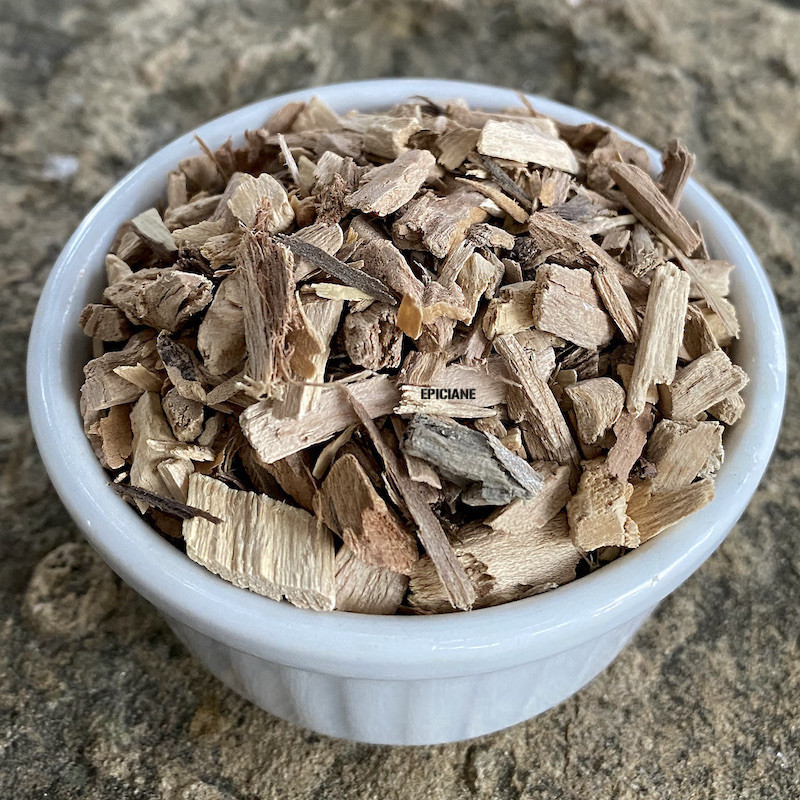
Reference: camomilleRom


Its 100% natural cleansing properties allow you to wash your hair daily if desired.
And many other uses are possible around your home.
 Delivery
Delivery
Mondial Relay
 Returns
Returns
See conditions
 Payments
Payments
100% secure
Livré en sachet refermable
Uses:
Panama wood is offered in chips measuring approximately 1 to 3 cm in length.
This tree's wood has exceptional cosmetic properties, making it a true treasure. The bark of Panama wood is a natural soap as it contains saponins, molecules that effectively eliminate fats and impurities. It’s a versatile product, perfect for both personal hygiene and household cleaning due to the saponins within the wood.
As a Shampoo:
Its 100% natural properties allow you to wash your hair daily if desired, as it regulates excess sebum. Many other uses are possible around the home.
Shampoo Recipe
Ingredients:
Pour the water into a saucepan. Add the Panama wood. Boil for 10 minutes, then cover and let steep off the heat for 2 hours. Strain. Add the xanthan gum if desired and mix vigorously.
This shampoo can be stored in the fridge for about two weeks.
Different Uses of This Amazing Wood:
For Hair:
For the Body:
For Pet Care:
The same shampoo recipe can be used to wash pets’ coats.
As a Household Cleaner:
The same shampoo recipe serves as a base for homemade laundry detergent or cleaning products. Add baking soda for washing white clothes, as Panama wood may slightly tint white fabrics. Be careful to avoid contact with eyes, as it can sting, though it is harmless.
Who am I?
Origin: Chile
Scientific name: Quillaja saponaria
Other names: soap bark tree, soap bush, golden rain tree, Chinese lantern tree, summer mimosa.
Panama wood comes from the inner bark of the trunk of a tall, beautiful tree about 15 meters high, with evergreen, leathery leaves and white flowers. Harvest occurs from January to March.
The tree is native to Chile, despite what the name might suggest! It is also found in other South American countries and regions where it has been acclimated.
A Little History:
The indigenous Mapuche people were already aware of its qualities, using it to wash their hair and clothes.
Despite its Chilean origin, it retained the name Panama wood because its bark was first exported by ship from Panama in the 19th century.
The tree was introduced to France in 1789, with the first specimen planted on the Vilmorin estate. Today, it is increasingly used in urban areas for its resistance to pollution and drought, decorative foliage, and beautiful flowering followed by ornamental seeds.
Data sheet
Reference: camomilleRom
Reference: 9N7669901
Reference: 9K5061101
Reference: 121320001
Reference: 6N7456401
Reference: 3N7201902
Reference: PL-EK0-07
Reference: aubepinefl
Reference: laurierE
Reference: 9N7669901
Reference: 408164502
Reference: 112930001
Reference: angelique
Reference: 6L5609803
Reference: 9K5061101
Reference: 20731803
Reference: gentiane
Reference: 7K4954201
Reference: 11N7866301

Its 100% natural cleansing properties allow you to wash your hair daily if desired.
And many other uses are possible around your home.